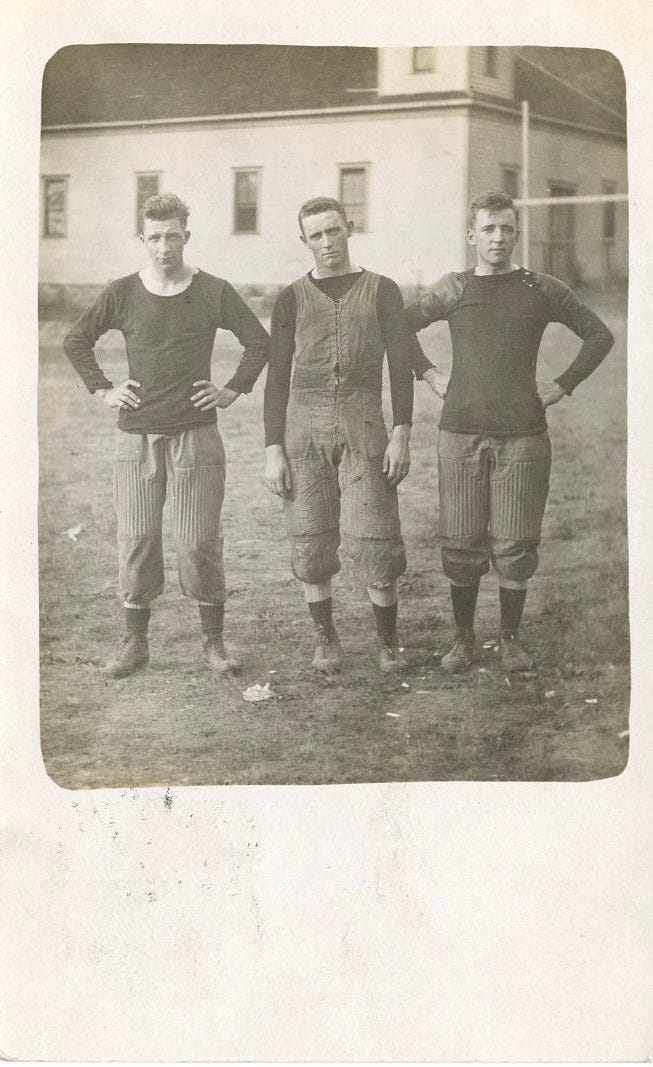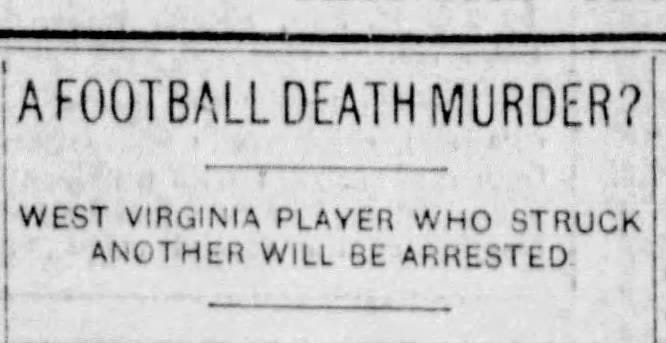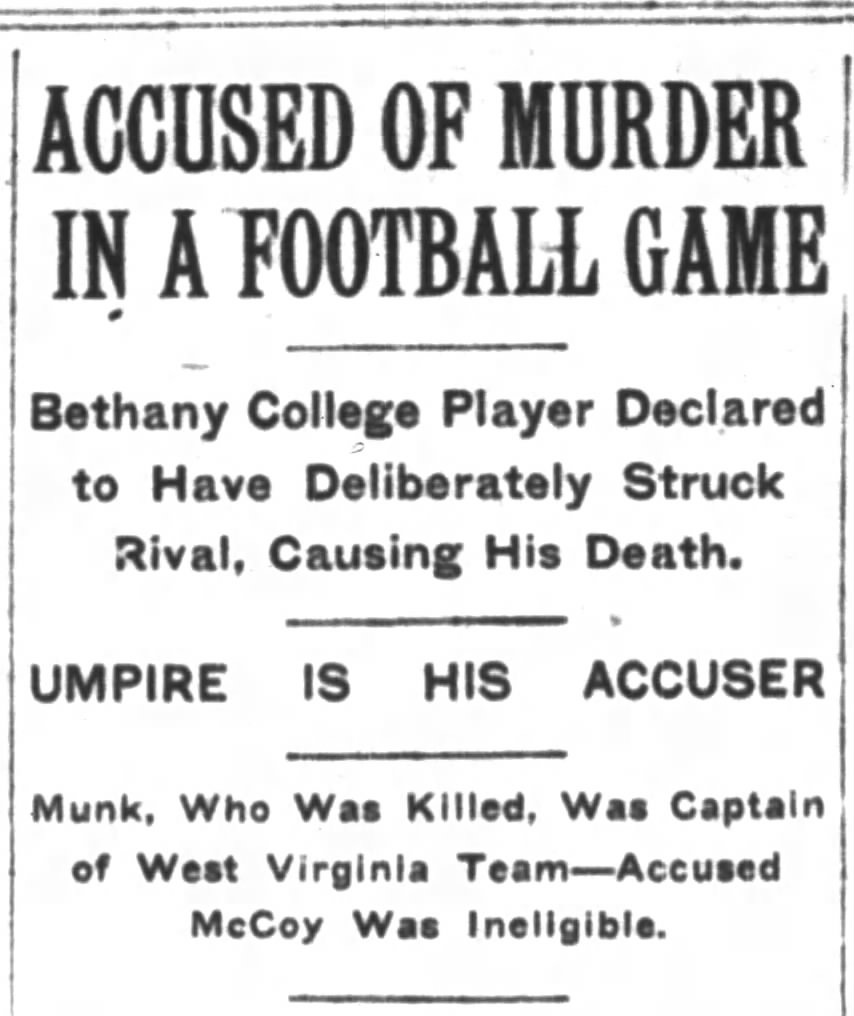Today's Tidbit... Murder On The Football Field?
A recent acquisition led to an unexpected story of a possible murder during a college football game in West Virginia, and it got me thinking, “What would have to happen in a football game that would justify charging a player with murder?” The folks in West Virginia partially answered that question more than 100 years ago.
The acquisition mentioned above was the RPPC below, showing three players standing before a building. While I was interested in the players’ uniforms, especially the ill-fitting pants on the player to the left, my primary interest came from the goal posts standing so close to the building and its windows. The RPPC was mailed by "Brainy" on October 21, 1910, to a friend in New Philadelphia, Ohio. Brainy described the three pictured players as Bethany College's running backs who were enjoying one of the best seasons in college history.
By the time Brainy put pen to paper, Bethany had lost to Geneva 8-0, beaten Washington & Jefferson 3-0 and Waynesburg 23-0 before playing West Virginia to a scoreless tie the day after Brainy mailed the postcard. Following those games were a 5-0 win over Scio, a 17-5 loss to Hiram, and a scoreless tie with West Virginia Wesleyan to set up a rematch with West Virginia in Wheeling.
Although there were post-game reports that the second Bethany-West Virginia game was chippy and Bethany's coach had complained several times to the ref about the game's roughness, nothing appeared out of the ordinary until the fourth quarter. West Virginia led 5-0 when their captain and quarterback Rudolph Munk kicked a 15-yard field goal to seal the game with several minutes left. Accounts vary, but a few plays after the field goal, Bethany's right end Thomas McCoy either struck Munk from behind, blocked him from the front, or kicked him in the head. However the contact occurred, Munk was carried off the field unconscious and died several hours later.
The game's umpire indicated the blow came from behind and was deliberate, and he immediately ejected McCoy from the game, yet none of the Bethany or West Virginia players saw the hit. Nevertheless, the nature of the hit led to talk that McCoy might be charged with murder, and a warrant was soon issued for McCoy to appear at a coroner's inquest two days after the game. The situation and warrant led to coverage in newspapers nationwide.
Both schools canceled the rest of their seasons as additional information emerged. McCoy, the accused, was a freshman from Canton, Ohio, who Bethany’s president declared was a substandard student and had returned to campus after spending two weeks at home, leading some to believe he had not been eligible to play in the game.
Munk, on the other hand, was a star quarterback from Connellsville, Pennsylvania. Despite being 130 pounds or less, he quarterbacked his high school team to a 12-0 loss to WVU as a senior before enrolling at Bucknell, where he earned the starting role as a freshman.
Munk transferred to West Virginia for his sophomore season, again getting the nod at quarterback. He became a key force until their Thanksgiving game with W&J when Munk was kicked in the head and knocked unconscious. Some reports indicate Munk remained unconscious for two days; others say it was two weeks before he recovered and finished his classes for the semester. Munk continued in school in the spring despite complaining of dizziness and other neurological symptoms. Through it all, his doctors advised him never to play football again.

Against medical advice and his parents' urgings, Munk returned to West Virginia in the fall of 1910 and announced his intention to play football, after which his teammates elected him captain. Munk suffered unspecified injuries in the second game of the 1910 season, missing two games before returning to the lineup for two games before the Bethany contest.
During the coroner's inquest, the umpire backtracked on what he had seen and his previous statements, while others indicated McCoy hit Munk from the front in a normal football fashion. Considering the latter testimony and Munk’s injury history, the coroner's jury determined Munk's death was accidental, so Thomas McCoy was exonerated. Shortly after that, McCoy and several teammates pledged never to play football again, and McCoy left Bethany and returned to his home in Canton.
Both teams returned to playing football in 1911, though Bethany’s 1912 yearbook mentions tightening their eligibility standards to ensure those representing the school were bona fide students fully meeting their classroom obligations.
Football Archaeology is reader-supported. Click here to buy one of my books or otherwise support the site.






Wow! What a story! It was an early episode of Gridiron Law and Order!
Another great story!